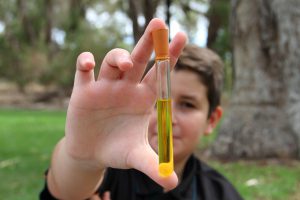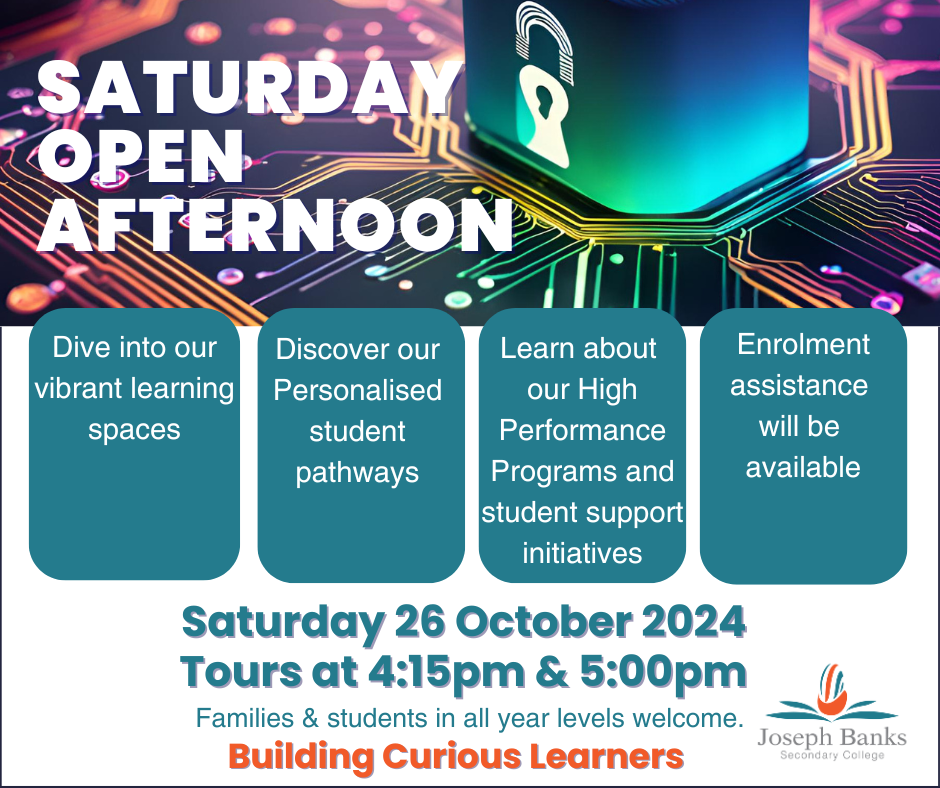Chemistry (ATAR)
Course Code: AECHE/ATCHE
Domain: Science
Timetable: Semester 1 and 2
Length of Course: 2 Years
Unit Information
Chemistry is the study of materials and substances and the transformations they undergo through
interactions and the transfer of energy. Chemists can use an understanding of chemical structures and
processes to adapt, control and manipulate systems to meet particular economic, environmental and social
needs. This includes addressing the global challenges of climate change and security of water, food and
energy supplies, and designing processes to maximise the efficient use of Earth’s finite resources. Chemistry
develops students’ understanding of the key chemical concepts and models of structure, bonding, and
chemical change, including the role of chemical, electrical and thermal energy. Students learn how models of
structure and bonding enable chemists to predict properties and reactions and to adapt these for particular
purposes.
Students explore key concepts and models through active inquiry into phenomena and through contexts
that exemplify the role of chemistry and chemists in society. Students design and conduct qualitative and
quantitative investigations both individually and collaboratively. They investigate questions and hypotheses,
manipulate variables, analyse data, evaluate claims, solve problems and develop and communicate
evidence-based arguments and models. Thinking in chemistry involves using differing scales, including
macro, micro and nano-scales; using specialised representations such as chemical symbols and equations;
and being creative when designing new materials or models of chemical systems. The study of chemistry
provides a foundation for undertaking investigations in a wide range of scientific fields and often provides
the unifying link across interdisciplinary studies.
Some of the major challenges and opportunities facing Australia and the Asia-Pacific region at the beginning
of the twenty-first century are inextricably associated with chemistry. Issues of sustainability on local,
national and global levels are, and will continue to be, tackled by the application of chemical knowledge
using a range of technologies. These include issues such as the supply of clean drinking water, efficient
production and use of energy, management of mineral resources, increasing acidification of the oceans, and
climate change.
Studying Chemistry provides students with a suite of skills and understandings that are valuable to a wide
range of further study pathways and careers. An understanding of chemistry is relevant to a range of
careers, including those in forensic science, environmental science, engineering, medicine, dentistry,
pharmacy and sports science. Additionally, chemistry knowledge is valuable in occupations that rely on an
understanding of materials and their interactions, such as art, winemaking, agriculture and food technology.
Some students will use this course as a foundation to pursue further studies in chemistry, and all students
will become more informed citizens, able to use chemical knowledge to inform evidence-based decision
making and engage critically with contemporary scientific issues.
Year 11
Unit One
Chemists design and produce a vast range of materials for many purposes, including for fuels, cosmetics,
building materials and pharmaceuticals. As the science of chemistry has developed over time, there has
been an increasing realisation that the properties of a material depend on, and can be explained by, the
material’s structure. A range of models at the atomic and molecular scale enable explanation and prediction
of the structure of materials and how this structure influences properties and reactions. In this unit, students
relate matter and energy in chemical reactions as they consider the breaking and reforming of bonds as new
substances are produced. Students can use materials that they encounter in their lives as a context for
investigating the relationships between structure and properties.
Through the investigation of appropriate contexts, students explore how evidence from multiple disciplines
and individuals have contributed to developing understanding of atomic structure and chemical bonding.
They explore how scientific knowledge is used to offer reliable explanations and predictions, and the ways in
which it interacts with social, economic and ethical factors.
Students use science inquiry skills to develop their understanding of patterns in the properties and
composition of materials. They investigate the structure of materials by describing physical and chemical
properties at the macroscopic scale, and use models of structure and primary bonding at the atomic and
sub-atomic scale to explain these properties. They are introduced to the mole concept as a means of
quantifying matter in chemical reactions.
Unit Two
Students develop their understanding of the physical and chemical properties of materials, including gases,
water and aqueous solutions, acids and bases. Students explore the characteristic properties of water that
make it essential for physical, chemical and biological processes on Earth, including the properties of
aqueous solutions. They investigate and explain the solubility of substances in water, and compare and
analyse a range of solutions. They learn how rates of reaction can be measured and altered to meet
particular needs, and use models of energy transfer and the structure of matter to explain and predict
changes to rates of reaction. Students gain an understanding of how to control the rates of chemical
reactions, including through the use of a range of catalysts.
Through the investigation of appropriate contexts, students explore how evidence from multiple disciplines
and individuals have contributed to developing understanding of intermolecular forces and chemical
reactions. They explore how scientific knowledge is used to offer reliable explanations and predictions, and
the ways in which it interacts with social, economic and ethical factors.
Students use a range of practical and research inquiry skills to investigate chemical reactions, including the
prediction and identification of products and the measurement of the rate of reaction. They investigate the
behaviour of gases, and use the Kinetic Theory to predict the effects of changing temperature, volume and
pressure in gaseous systems.
Year 12
Unit Three
The idea of reversibility of reaction is vital in a variety of chemical systems at different scales, ranging from
the processes that release carbon dioxide into our atmosphere to the reactions of ions within individual cells
in our bodies. Processes that are reversible will respond to a range of factors and can achieve a state of
dynamic equilibrium. In this unit, students investigate acid‐base equilibrium systems and their applications.
They use contemporary models to explain the nature of acids and bases, and their properties and uses. This
understanding enables further exploration of the varying strengths of acids and bases. Students investigate
the principles of oxidation and reduction reactions and the production of electricity from electrochemical
cells.
Through the investigation of appropriate contexts, students explore the ways in which models and theories
related to acid‐base and redox reactions, and their applications, have developed over time and through
interactions with social, economic and ethical considerations. They explore the ways in which chemistry
contributes to contemporary debate in industrial and environmental contexts, including the use of energy,
evaluation of risk and action for sustainability, and they recognise the limitations of science in providing
definitive answers in different contexts.
Students use science inquiry skills to investigate the principles of dynamic chemical equilibrium and how
these can be applied to chemical processes and systems. They investigate a range of electrochemical cells,
including the choice of materials used and the voltage produced by these cells. Students use the pH scale to
assist in making judgements and predictions about the extent of dissociation of acids and bases and about
the concentrations of ions in an aqueous solution.
Unit Four
This unit focuses on organic chemistry and the processes of chemical synthesis by which useful substances
are produced for the benefit of society. Students investigate the relationship between the structure,
properties and chemical reactions of different organic functional groups and the vast diversity of organic
compounds. Students also develop their understanding of the process of chemical synthesis to form useful
substances and products and the need to consider a range of factors in the design of these processes.
Through the investigation of appropriate contexts, students explore the ways in which models and theories
have developed over time and through interactions with social, economic and ethical considerations. They
explore the ways in which chemistry contributes to contemporary debate regarding current and future uses
of local, regional and international resources, evaluate the risk and action for sustainability, and they
recognise the limitations of science in providing definitive answers in different contexts.
Students use science inquiry skills to investigate the principles and application of chemical structure in
organic chemistry, and of chemical synthesis processes. They make predictions based on knowledge of types
of chemical reactions, and investigate chemical reactions qualitatively and quantitatively.
Pathway Information
Tertiary
Workforce
Students undertaking this course may wish to consider tertiary studies in:
- Chemistry
- Medicine
- Engineering
This course suits direct workforce entry into the following:
- Laboratory Worker
- Armed Forces
Additional Information
Estimated Charges: $70





